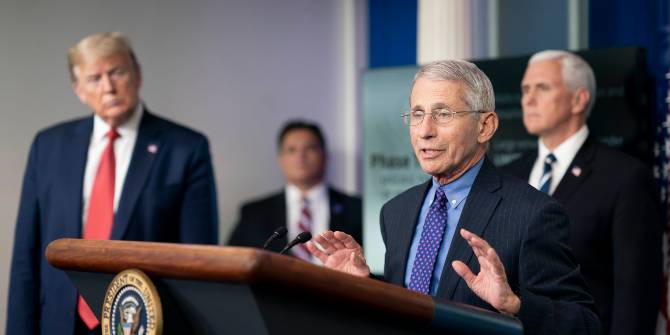For many people, abortion and contraception were already hard to obtain. The effect of lockdowns and overstretched health systems has exposed the structural violence that shapes their experiences, write Rishita Nandagiri, Ernestina Coast, and Joe Strong (LSE).
By the time COVID-19 was officially declared a pandemic, many lockdown and quarantine policies were already in place. Along with the impact of travel restrictions, breakdown in supply chains and overwhelmed health systems, these policies have disrupted access to sexual and reproductive health (SRH) services such as abortion. The pandemic has revealed and amplified the existing fractures and faultlines that shape and influence abortion access, and the conditions under which it occurs.
These faultlines—restrictive laws, social and legal sanctions including stigma, lack of resources, poor quality care, and refusal or unavailability of services—have always mediated access to abortion. They are manifestations of “structural violence”: the violence of injustice and inequity. Distinct from direct or interpersonal violence, it focuses attention on often unnoticed systems—legal, political, economic and sociocultural institutions—that shape an individual’s experiences, health and wellbeing.

Most early responses to COVID-19 focused on (i) individual experiences, and (ii) policies and responses to mitigate the impact of the pandemic. Only later were broad injustices acknowledged, such as the role of structural racism in excess deaths in the UK. These injustices are forms of “everyday violence”, exerting violence in systematic and direct ways that create conditions of pain and suffering. Intersecting with other institutionalised systems of inequality like ableism or sexism, structural violence sets up and functions through a “social machinery of oppression”. These experiences of everyday violence are cumulative, creating “unequal life chances” that directly impact womxn’s health and wellbeing during their lifetimes. Structural violence makes these interlocking structures, and their compounding impacts visible.
Magnifying inequities
COVID-19 affects the circumstances—such as increased intimate partner violence under lockdown or quarantine measures—that make pregnancies supportable or unsupportable. It also affects whether people can obtain contraceptives, and abortion-related care. These disruptions and delays have potentially increased the number of unintended or unplanned pregnancies.
Lockdown policies routinely used a “one size fits all” approach, which homogenised populations and ignored specific needs between genders, classes and ethnicities, exacerbating existing inequalities. These measures have reduced access to services for womxn seeking abortions, with services limited and travel restricted. These experiences were present pre-pandemic too, affecting womxn differently across axes of race, ethnicity, age, class, gender, and marital status, among other factors. They show how risks are structurally embedded, and dealt with and experienced differently.
The individualisation of responsibility for “good” behaviour
Interventions in SRH and abortion have largely focused on individual responsibility and behaviours, such as responsible contraceptive use. These efforts can inadvertently double burden womxn, holding them accountable for “responsible” behaviours while requiring them to do so under conditions of structural violence. This individualisation narrative is dangerous. It builds on ideas of “good” reproductive behaviours which draw on and reinforce structures that privilege ableism, classism, sexism and racism. These can have a profound impact on womxn’s abortion trajectories. For example, in Nicaragua, where a total ban on legal abortion is heightened by social stigma around womxn’s sexual behaviours (including contraceptive use) and the presence of machismo, structural factors combine to produce the violent conditions under which womxn try to make decisions. Any failure to meet and model “good” reproductive behaviours is then blamed on individuals and their “traits”, rather than the conditions that surround them and mediate their decisions.
Individualisation and “responsibilisation” also underpins how and why Indigenous and Two-Spirit people, sex workers, trans and non-binary persons, migrants, or those living with HIV/AIDS experience direct and indirect forms of violence and discrimination. While negative outcomes are felt and experienced individually, it is structural violence that subjects people to conditions of oppression and social suffering.
In previous health emergencies like Zika, government responses recommended womxn avoid or delay pregnancy. This ignored gender, class and race inequalities and offset the responsibility of risk management to womxn. Similar questions have been raised about policy responses to COVID-19.
The persistence of structural violence, however, does not go unchallenged. Using a structural violence lens shows how individuals, communities and solidarities all resist these conditions, re-imagining new ways of care provision, sustained campaigning to overturn violent laws or resisting social stigma through individual acts of rebellion. Abortion telemedicine—largely unavailable previously—has grown during the COVID-19 pandemic as a result of public and professional activism. COVID-19 has made visible the structural violence of not providing medical abortion by telemedicine in non-pandemic times, and the continued criminalisation of self-management.
Reproductive autonomy is non-negotiable
Like other health emergencies such as Ebola and Zika, COVID-19, rather than creating new forms of injustice, has made existing structural violence and inequities visible. Whether abortion is considered part of essential health care—and if it is, the availability and quality of that abortion care—is an expression of structural violence. The restrictions on abortion and contraceptive access are violations of reproductive autonomy. As Leigh Senderowicz and Jenny Higgins state emphatically, “reproductive autonomy is non-negotiable, even in times of COVID-19.”
We use the terms “womxn” or “pregnant persons” to include all individuals—transmen, nonbinary persons, cis-gender women, among others—who may want or need an abortion.
This post represents the views of the author and not those of the COVID-19 blog, nor LSE.






I find this a peculiar article which needs its own glossary . Moreover if the only example you can cite to support your general argument is from Nicaragua, better not publish in Europe where the laws and practice on contraception and abortion are totally different.
I’m surprised that Abortion Rights UK has republished your piece.